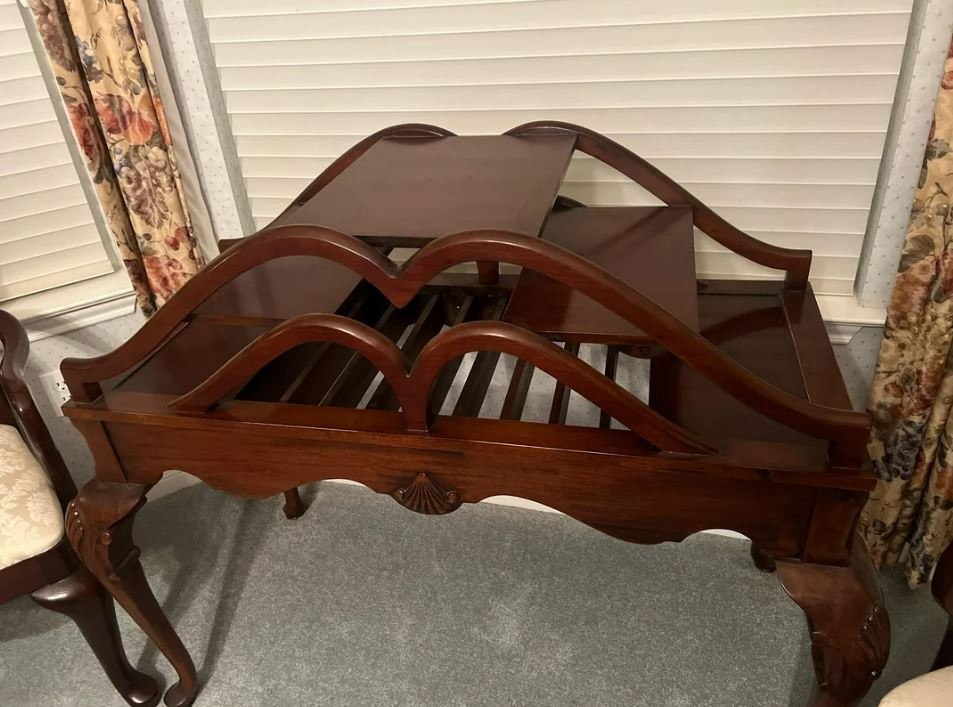ADVERTISEMENT
These tools, though simple by modern standards, require years of practice to use effectively. The craftsmanship comes not only from the tool but from the artisan’s ability to manipulate it to create beautiful, lasting pieces.
The Techniques: A Craft Passed Through Generations
Traditional woodworking isn’t just about using hand tools – it’s also about the techniques passed down through generations that help create durable and aesthetically pleasing pieces. Some of the key techniques include:
- Joinery: One of the cornerstones of traditional woodworking, joinery involves connecting pieces of wood together without using screws or nails. Techniques like mortise and tenon joints, dovetail joints, and butt joints create strong, lasting connections that can hold up for centuries.
- Carving: Wood carving involves shaping and molding wood into decorative forms. This can range from simple patterns and textures to intricate, detailed scenes. In traditional woodworking, carving is often done by hand with chisels and gouges to bring out the beauty of the wood’s natural grain.
- Inlaying: This technique involves embedding pieces of contrasting wood, metal, or other materials into a wooden surface to create decorative designs or patterns. Inlay work can add depth and beauty to a piece of furniture or art.
- Hand Finishing: Traditional woodworkers often finish their pieces by hand, using oils, waxes, or shellac to bring out the rich color and texture of the wood. This is a more labor-intensive process than modern techniques but results in a more authentic, beautiful finish.
- Shaping and Carving with Precision: Whether it’s creating rounded edges, delicate curves, or ornate floral patterns, traditional woodworkers excel at shaping wood with detail and care. Using hand tools allows for greater control, ensuring the woodworker can achieve precision on even the most intricate pieces.
The Charm of Handcrafted Wood Pieces
There’s something undeniably special about a handcrafted wooden object. From furniture to small decorative items, traditional woodworking brings out the wood’s natural beauty, allowing each piece to showcase the unique grain, knots, and textures that make it one of a kind.
Whether it’s a hand-carved wooden chair, a fine table with dovetail joints, or an intricately designed wooden cabinet, these pieces hold an unparalleled charm that mass-produced furniture simply can’t replicate. The time and effort invested in creating these items imbue them with a sense of history and personal touch.
Why Traditional Woodworking Matters Today
In today’s fast-paced, mass-production world, there’s a growing appreciation for handcrafted goods, and traditional woodworking is enjoying a resurgence. Here’s why:
- Sustainability: Many traditional woodworking techniques emphasize the use of locally sourced wood, which can be a sustainable option compared to mass-produced furniture made from synthetic or less eco-friendly materials.
- Durability: Handcrafted wooden items are often built to last a lifetime. With expert joinery and quality materials, they can withstand the test of time, becoming family heirlooms passed down through generations.
- For Complete Cooking STEPS Please Head On Over To Next Page Or Open button (>) and don’t forget to SHARE with your Facebook friends
- Connection to Tradition: As we move further into the digital age, people are yearning for a connection to craftsmanship and tradition. Traditional woodworking offers a way to reconnect with the artistry and skill that has been passed down for generations.
- Customization: Unlike mass-produced furniture, handcrafted wood pieces can be customized to fit specific tastes, needs, and spaces. This allows for more personalized, meaningful creations.
Conclusion: The Enduring Beauty of Traditional Woodworking
Traditional woodworking is more than just a craft – it’s a way to create timeless pieces that carry with them the skill, history, and artistry of generations past. By using simple tools and techniques, artisans are able to bring out the beauty of the wood and create functional works of art that stand the test of time. Whether it’s a handcrafted chair, a detailed carving, or a beautifully finished cabinet, traditional woodworking reminds us of the value of craftsmanship and the enduring beauty of natural materials.
In a world that increasingly values speed and mass production, there’s something truly special about the patience and dedication that traditional woodworking demands. By embracing this age-old craft, we not only preserve the skill but also bring a touch of authentic artistry and warmth into our modern lives.
